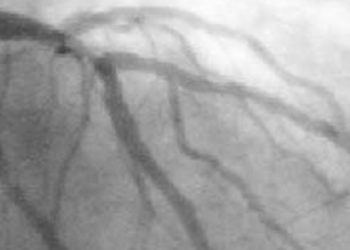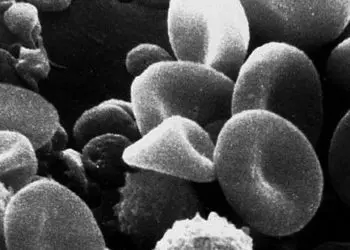2 Minute Medicine Rewind January 27, 2025
1. Postpartum depression is associated with higher risks of a wide variety of chronic diseases including mental, respiratory, digestive, and heart multimorbidity clusters.
2. Body Mass Index (BMI) was a modest mediator of this interaction while smoking, alcohol use, and physical activity were not implicated in this association.
Evidence Rating Level: 2 (Good)
Postpartum depression (PPD), experienced by 9.3% of women in a cohort of 54,885 UK Biobank participants, is associated with increased risks of chronic diseases and multimorbidity in mid-to-late life. At baseline, women with a history of PPD had 35% higher odds of multimorbidity (adjusted OR = 1.35, 95% CI: 1.27–1.44, p < 0.001) compared to those without. During a median follow-up of 15 years, these women exhibited a 13% higher hazard of developing multimorbidity (adjusted HR = 1.13, 95% CI: 1.08–1.20, p < 0.001) and an 8% higher rate of new-onset chronic diseases (adjusted RR = 1.08, 95% CI: 1.05–1.12, p < 0.001). PPD was linked to a faster annual accumulation of chronic diseases (β = 0.009, 95% CI: 0.007–0.011, p < 0.001). Specific multimorbidity clusters, such as mental (adjusted OR = 2.05, 95% CI: 1.89–2.22, p < 0.001), respiratory (adjusted OR = 1.22, 95% CI: 1.11–1.33, p < 0.001), digestive (adjusted OR = 1.19, 95% CI: 1.08–1.31, p < 0.001), and heart patterns (adjusted OR = 1.13, 95% CI: 1.03–1.25, p = 0.01), showed significant associations with PPD. BMI was a modest mediator, explaining 6.38% of the association between PPD and multimorbidity (p < 0.01), while other lifestyle factors such as smoking, alcohol use, and physical activity showed no mediation. These findings underscore the importance of addressing PPD as a critical determinant of women’s long-term health, emphasizing the need for integrated maternal mental health care to mitigate chronic disease risks and multimorbidity throughout the life course.
1. The use of short-acting beta-agonists, antibiotics, and oral corticosteroids had a dose-dependent response with all-cause mortality and COPD-related mortality.
Evidence Rating Level: 2 (Good)
This retrospective cohort study assessed the associations between short-acting beta-agonists (SABAs), antibiotics, oral corticosteroids (OCS), and adverse outcomes in 188,969 patients with COPD in Alberta, Canada, from 2011 to 2020. A dose-response relationship was observed between SABA use and mortality. Patients with 6+ SABA canisters annually had 20% higher all-cause mortality (HR: 1.20, 95% CI: 1.16–1.24, p < 0.001) and 40% higher COPD-related mortality (HR: 1.40, 95% CI: 1.34–1.46, p < 0.001) compared to those with one canister. Antibiotics and OCS also showed dose-response effects. Patients receiving 6+ antibiotic dispensations annually had 62% higher all-cause mortality (HR: 1.62, 95% CI: 1.57–1.66, p < 0.001) and 43% higher COPD-related mortality (HR: 1.43, 95% CI: 1.38–1.49, p < 0.001). For 6+ OCS burst days, all-cause mortality increased by 27% (HR: 1.27, 95% CI: 1.18–1.36, p < 0.001). SABAs were linked to major adverse cardiac events (MACE) post-COPD exacerbation, with 2–5 canisters raising MACE rates by 26% (IRR: 1.26, 95% CI: 1.16–1.36, p < 0.001). These findings highlight the association between frequent medication use and severe outcomes, potentially reflecting disease severity or suboptimal management. The study emphasizes the importance of monitoring medication patterns in COPD care and tailoring treatment to prevent progression and adverse events. Further research is warranted to clarify causality and improve treatment strategies.
1. Individuals with psoriasis had a 50% higher risk of developing Sjögren’s syndrome
2. Transcriptomic analysis showed overlapping immune pathways in both conditions including interferon responses, JAK-STAT signaling, and cytokine release
Evidence Rating Level: 2 (Good)
This retrospective cohort study explored the association between psoriasis and Sjögren’s syndrome (SS) using a propensity score-matched cohort study and transcriptomic analysis. Among 293,905 patients with psoriasis and an equal number of matched controls without psoriasis, individuals with psoriasis exhibited a 50% higher risk of developing SS (hazard ratio [HR] = 1.50, 95% CI: 1.42–1.58, p < 0.001). The risk was even more pronounced in patients with psoriatic arthritis (PsA) (HR = 2.27, 95% CI: 2.06–2.49, p < 0.001) and those receiving biological therapies (HR = 1.66, 95% CI: 1.44–1.91, p < 0.001). Transcriptomic analysis identified overlapping immune pathways in both conditions, including activation of the interferon (IFN) response, JAK-STAT signaling, and cytokine release. Key genes linked to inflammation, antiviral defense, and immune cell recruitment were upregulated in both psoriasis and SS, suggesting shared immunopathogenesis. The study highlights the role of immune dysregulation, particularly T-cell and cytokine-mediated inflammation, in linking the two diseases. Subgroup analysis revealed variability in risk by age, sex, and geographic region, with the Asia-Pacific region showing the highest incidence. These findings emphasize the importance of monitoring SS risk in psoriasis patients, particularly those with PsA or undergoing biologic treatment. The study underscores the need for personalized screening strategies and further investigation into molecular mechanisms to inform targeted therapies.
1. The systemic immune-inflammatory index (SII), systemic inflammatory response index (SIRI), pan-immune inflammation value (PIV), and platelet-to-lymphocyte ratio (PLR) are strongly linked to increased mortality risk in patients with COPD
Evidence Rating Level: 2 (Good)
Chronic obstructive pulmonary disease (COPD) is characterized by chronic inflammation, which plays a pivotal role in its pathogenesis. This retrospective cohort study evaluated the association between systemic immune-inflammatory indices (SII, SIRI, PIV), neutrophil-to-lymphocyte ratio (NLR), and platelet-to-lymphocyte ratio (PLR) with all-cause mortality in COPD patients and assessed their prognostic value. Data from 1,234 COPD patients in the MIMIC-IV database were analyzed and stratified into quartiles based on baseline inflammatory markers. The primary outcomes were in-hospital and ICU mortality. Restricted cubic spline analysis revealed positive, non-linear correlations between inflammatory markers and in-hospital mortality. Multivariate Cox regression confirmed these markers as independent risk factors for mortality. Kaplan-Meier curves demonstrated significantly lower survival probabilities in patients with elevated SII, SIRI, PLR, and PIV. The findings suggest these markers are strongly linked to increased mortality risk in COPD patients and highlight their potential as biomarkers for risk stratification and treatment planning in critical care settings. This study underscores the importance of composite inflammatory markers in the prognosis and management of COPD, offering insights into personalized therapeutic strategies for improving patient outcomes.
1. Deep neuromuscular blockade in radiofrequency catheter ablation under general anesthesia reduced the atrial fibrillation recurrence rate compared to moderate neuromuscular blockade
Evidence Rating Level: 1 (Excellent)
This randomized controlled trial investigated the impact of neuromuscular blockade depth on atrial fibrillation (AF) recurrence following radiofrequency catheter ablation (RFCA) under general anesthesia. The study compared moderate (Group M) and deep (Group D) neuromuscular blockade in 94 patients over a 12-month follow-up. Both groups underwent RFCA with standardized anesthesia protocols, differing only in the intensity of muscle relaxation monitored via train-of-four and post-tetanic counts. Key outcomes included the recurrence rates of AF and related symptoms, assessed through electrocardiographic diagnosis and clinical evaluations. There was a significant reduction in AF recurrence in Group D (25%) compared to Group M (46%), with a relative risk of 0.545. Symptom recurrence rates mirrored this trend, being notably lower in the deep blockade group (25% vs. 54%, p=0.003). Additionally, procedural stability and operator satisfaction were higher in the deep blockade group due to minimized diaphragmatic movements and improved catheter contact. However, no significant differences were observed in anesthesia or ablation durations. This suggests that deep neuromuscular blockade enhances RFCA efficacy by providing a stable surgical environment, leading to lower AF recurrence rates. This research underscores the importance of precise anesthetic management in optimizing RFCA outcomes and calls for further studies to confirm these results and explore long-term implications.
Image: PD
©2024 2 Minute Medicine, Inc. All rights reserved. No works may be reproduced without expressed written consent from 2 Minute Medicine, Inc. Inquire about licensing here. No article should be construed as medical advice and is not intended as such by the authors or by 2 Minute Medicine, Inc.







